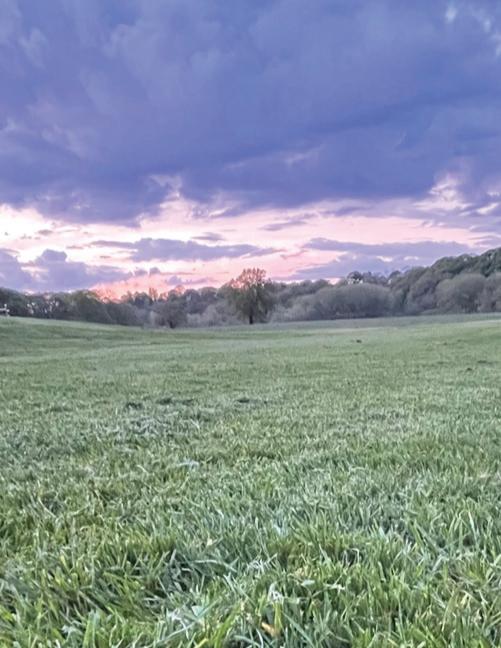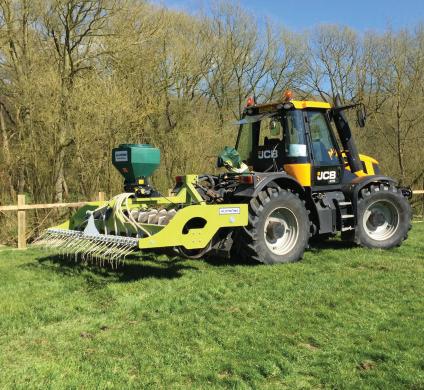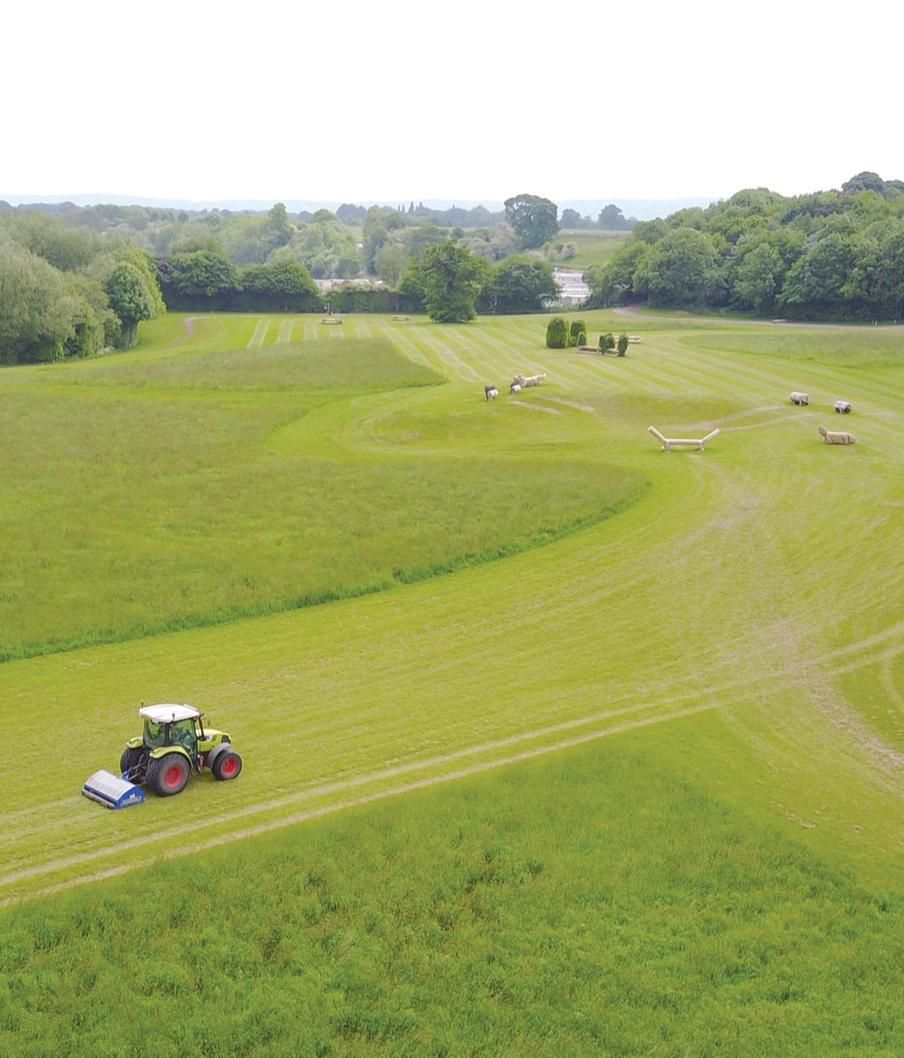
4 minute read
eventful business An
Somerford Park Farm
Prior to the second world war, Somerford Park Farm was a large country estate, and then became part of Cheshire’s important dairy farming industry. It was in this role that the 1000acre farm came into the possession of the King family. By the 1980s horses had become a serious passion, which turned into the bulk of the business by the Millennium.
Advertisement
Today it is home to 250 competition and leisure horses year-round, but as a leading competition venue can draw as many as 1000 equines at a time to its events.
This includes British Eventing’s Somerford Park Farm International Horse Trials which attracts leading horses and riders for dressage, cross country and showjumping and the LeMieux National Dressage Championships.
However, there is an equal focus on ‘grass roots’ riding, as Millie Heffernan (neé King) explains:
“We have six and a half miles of off-road farm ride, which like many of our facilities is available for all to hire and is included in the package for our residents. There is a summer grass ride, which runs alongside a specially designed all-weather track that is open all year.”
Four large outdoor all-weather areas can be subdivided to make twelve arenas in total, all with Andrews Bowen surfaces. In winter, the showground arenas are transformed into a cross country practice area on the all-weather surfaces using portable fences, allowing riders to train all year round on five acres which includes a water jump complex, fed by the field drains.
One indoor arena is reserved for the exclusive use of residents; other facilities can be hired by internal or external clients.
“The construction and maintenance of the all-weather arenas is of the utmost importance,” comments Josh King. “The surfaces need to be able to withstand the wear and tear from some 15,000 horses per year.”
Each arena has a specific sand/wax content to meet the needs of its users, whether that is for dressage, show jumping or general riding, and each is harrowed with purpose-designed graders twice or three times a week.
Once a year, the arenas are stripped, laser graded, depth checked and resurfaced.
Eight full time staff are kept busy with farm and equestrian facility maintenance; one is dedicated to mowing and harrowing.
In addition to competitions, an increasingly important income stream is riding ‘camps’, where riders bring their horses to Somerford for several days at a time for lessons, talks and socialising.
Major competitions are subject to tender, and Millie points out that a 3-5 year agreement is required to justify the investment needed to meet the requirements of a prestigious event.
“But events also generate business – leading riders will see the quality of our facilities and hire them for their private use for training.”
Set within 80 acres of parkland, more than 100 cross country jumps have been built and there is also a dedicated cross-country course reserved for the horse trials.
The British Eventing cross country course was designed by David Evans and Andrew Heffernan, coach to the Netherlands Eventing team, in conjunction with BE’s technical advisors, with construction and maintenance of its grass track equally exacting.
“It was developed fifteen years ago using an arena grass mix, and was drained by a local contractor,” explains Josh. “We have a year-round maintenance programme and decompaction is key. I use an Imants Shockwave and a Verti-Drain and I really like the action of the Shockwave which works deeper and lifts the soil profile.”
A slitter is used for surface work, and a Sumo grassland subsoiler is deployed to lift any deep compaction.

“Post-event, we topdress with sand from our own quarry using muck spreaders to cover the large area, putting on about an inch a year, a total of 300-500 tonnes, which helps to level the surface,” he says.
“We’ll then overseed with a Vredo slot seeder and continue with the decompaction programme until the following year’s event.”
“To keep it as a top level facility for a thousand horses to use over the course of the event, the exclusive use for competition and the intensive maintenance programme is essential.”
At the Somerford Park International Horse Trials a large grass area is divided into 11 individual dressage arenas, all carefully maintained to provide the footing for top level event horses in this phase.
“An Imants Penetrometer is useful to check compaction and plan repair work, and we’ve got our own irrigators if the ground starts to dry out.”
Above: Left A careful fertiliser programme is used to produce a resilient yet high presentation sward. Right Universally referred to as an ‘Agrivator’, this heavy duty aerator can be used in the run up to events to loosen firm turf surfaces and allow infiltration of any rain.
Above: An international standard crosscountry course is reserved for one major event a year and receives a high level of maintenance, including using an Imants Shockwave to tackle compaction.


Top right Somerford Park Farm has been developed by the King family into an equestrian events venue for top level competition including the British Dressage National Championships.

The farm ride was purpose-built, using sand over road planings to make a surface which withstands year-round use and accommodates more cross-country jumps; a grass track largely follows the same route and gives riders a river crossing to negotiate in the summer.
“The farm ride gets regular harrowing and we back blade into the jumps to keep the surface consistent,” explains Josh. “Then we use spiked rollers on the grass to alleviate compaction and encourage grass growth, and we’ll spread chicken litter to increase organic matter.”
Mowing is a substantial job; a Trimax tractormounted rotary mower has rollers front and rear to give the required finish. “We couldn’t use a topper as it would tear the grass sward; grass quality and appearance is very important. We also mob graze sheep in the grass areas over winter, moving them on frequently to minimise damage. They are useful for levelling the ground, squashing any frost heave.”
All spraying is done in-house, and fertiliser application is tailored to the season – high P&K to encourage root growth to present a stable surface and withstand damage, and then N topdressing for a final green-up before shows.
Tractors are shared with the farm which has a handy line in producing some 18,000 bales of haylage a year for horse feed, sold nationwide.
The JCB Fastracs and an assortment of Massey Fergusons are all shod on grass tyres to minimise the impact on the turf, including wide Nokian 800 and 650s.
With two workshops and machinery stores on site, many infrastructure projects are carried out in house; for example, plastic temporary barriers are being gradually replaced with attractive portable timber structures.
Despite its large all-weather areas, Somerford retains a natural, park-like appearance with water features, trees and hedges, and its ambiance, along with the central location and good motorway access, was a major feature in arenas.










